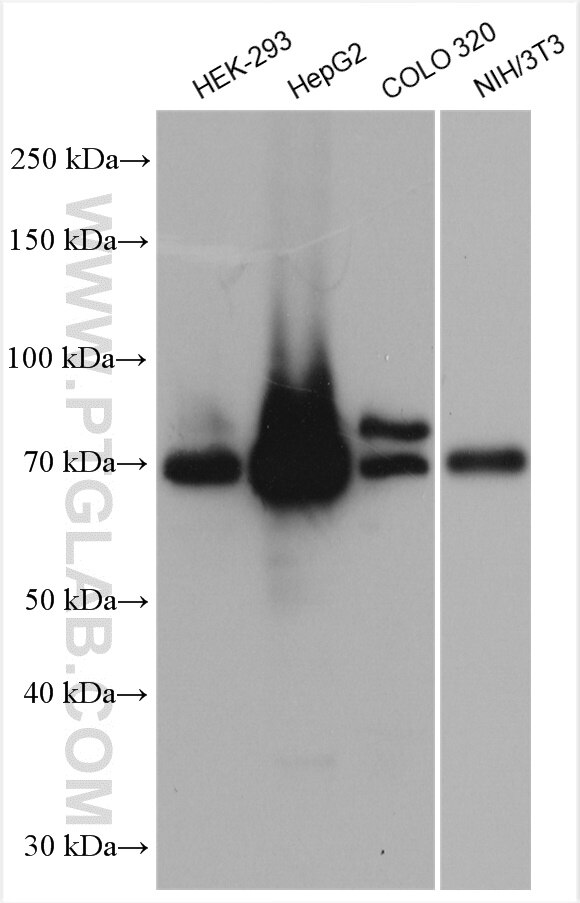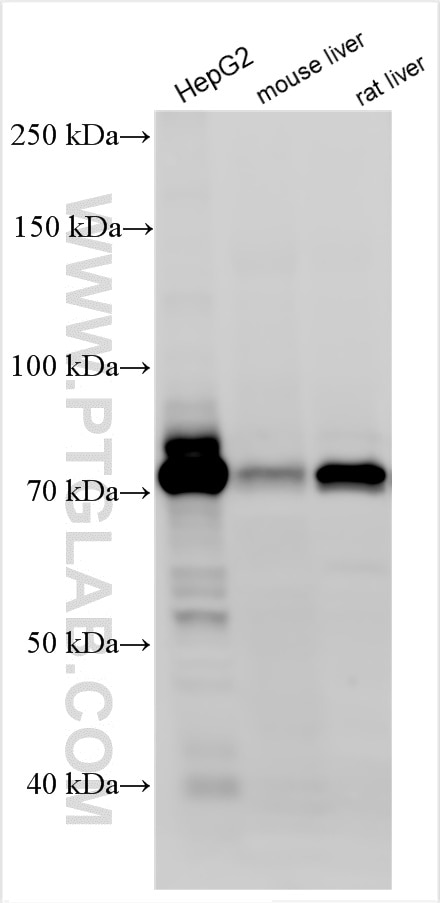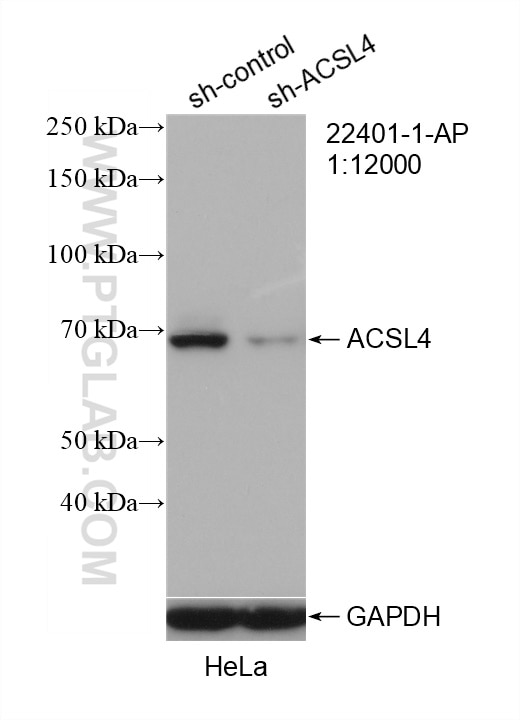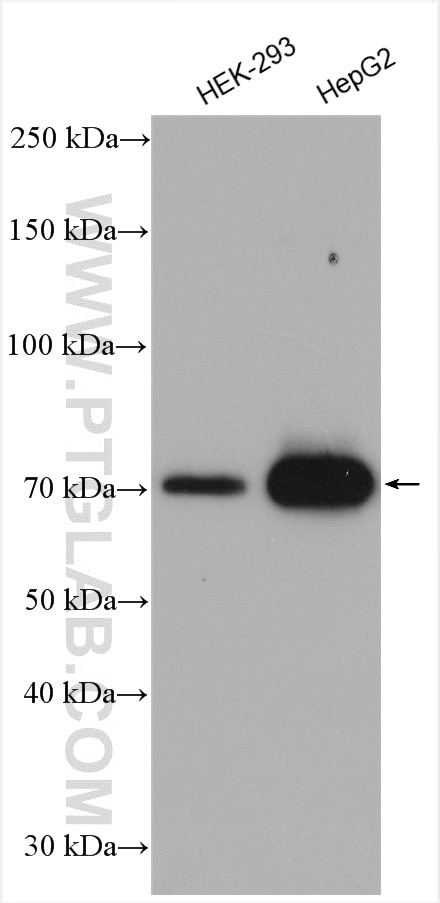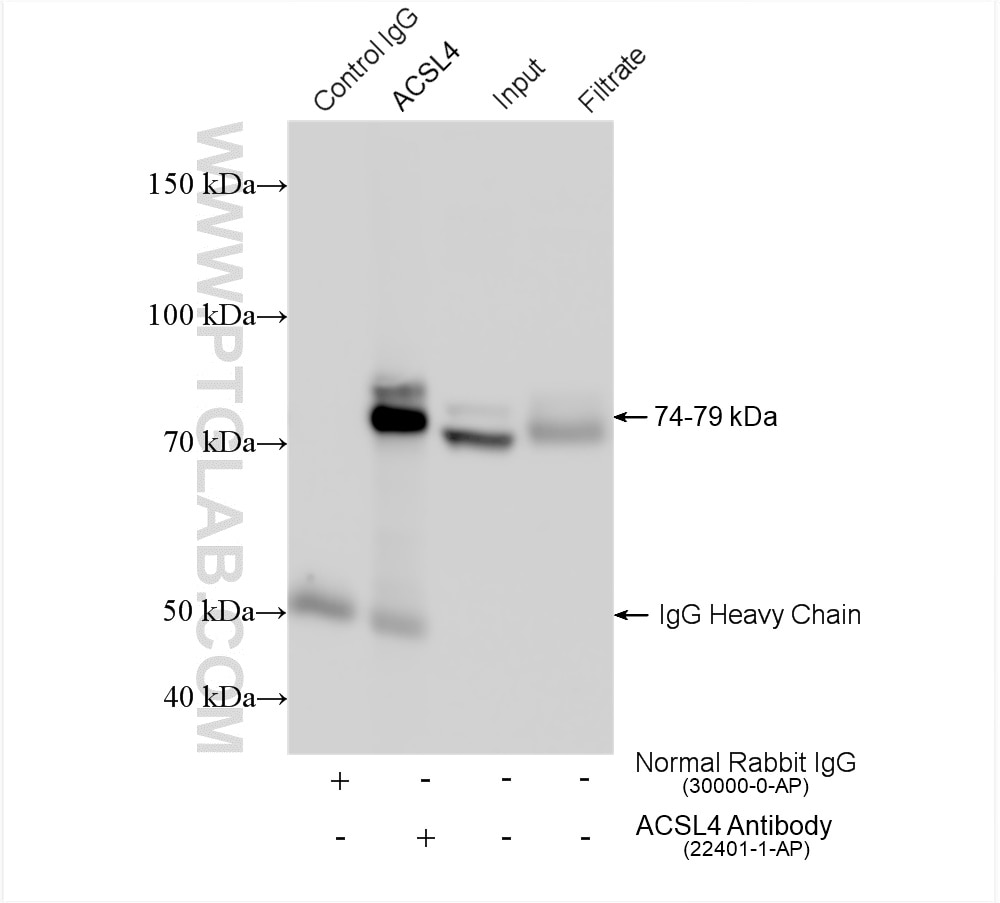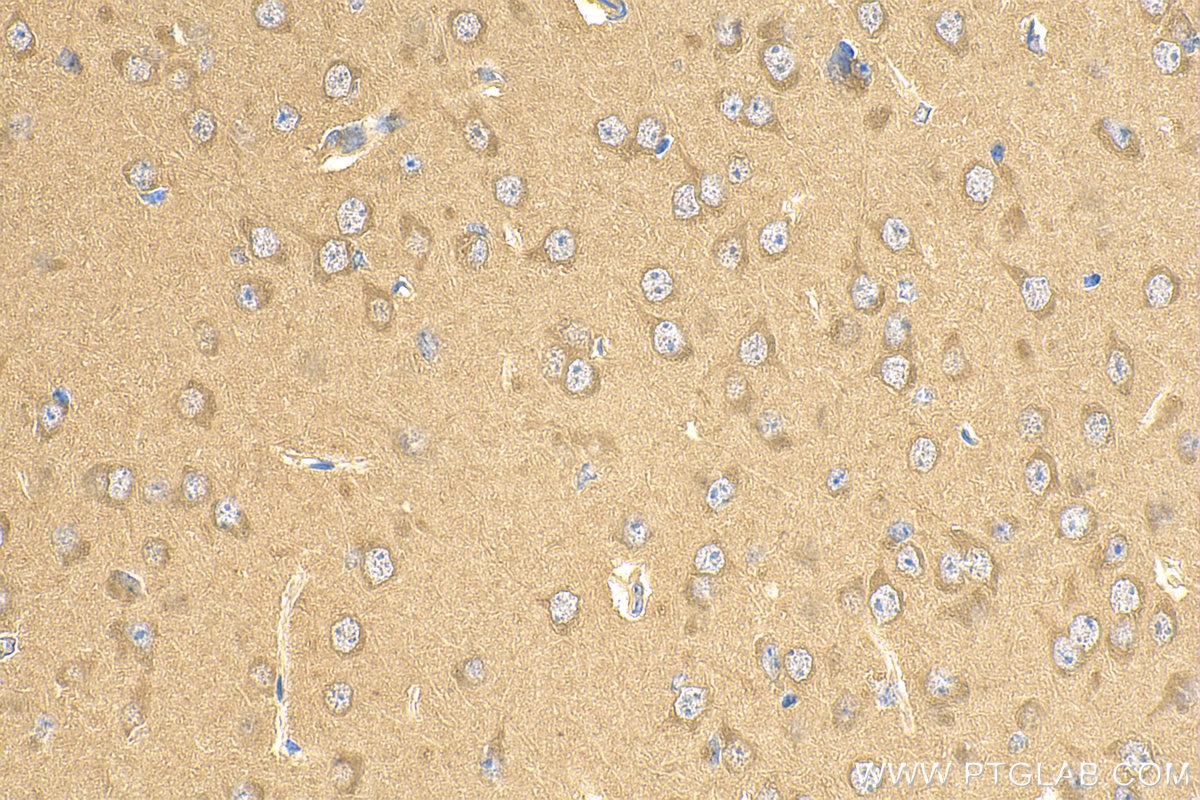- Phare
- Validé par KD/KO
Anticorps Polyclonal de lapin anti-ACSL4/FACL4
ACSL4/FACL4 Polyclonal Antibody for WB, IP, IHC, ELISA
Hôte / Isotype
Lapin / IgG
Réactivité testée
Humain, rat, souris et plus (2)
Applications
WB, IHC, IP, CoIP, ELISA, IF
Conjugaison
Non conjugué
130
N° de cat : 22401-1-AP
Synonymes
Galerie de données de validation
Applications testées
| Résultats positifs en WB | cellules HEK-293, cellules COLO 320, cellules HeLa, cellules HepG2, cellules NIH/3T3 |
| Résultats positifs en IP | cellules HEK-293, |
| Résultats positifs en IHC | tissu cérébral de souris, il est suggéré de démasquer l'antigène avec un tampon de TE buffer pH 9.0; (*) À défaut, 'le démasquage de l'antigène peut être 'effectué avec un tampon citrate pH 6,0. |
Dilution recommandée
| Application | Dilution |
|---|---|
| Western Blot (WB) | WB : 1:2000-1:12000 |
| Immunoprécipitation (IP) | IP : 0.5-4.0 ug for 1.0-3.0 mg of total protein lysate |
| Immunohistochimie (IHC) | IHC : 1:50-1:500 |
| It is recommended that this reagent should be titrated in each testing system to obtain optimal results. | |
| Sample-dependent, check data in validation data gallery | |
Applications publiées
| KD/KO | See 6 publications below |
| WB | See 115 publications below |
| IHC | See 26 publications below |
| IF | See 10 publications below |
| IP | See 3 publications below |
| CoIP | See 1 publications below |
Informations sur le produit
22401-1-AP cible ACSL4/FACL4 dans les applications de WB, IHC, IP, CoIP, ELISA, IF et montre une réactivité avec des échantillons Humain, rat, souris
| Réactivité | Humain, rat, souris |
| Réactivité citée | rat, Humain, porc, souris, duck |
| Hôte / Isotype | Lapin / IgG |
| Clonalité | Polyclonal |
| Type | Anticorps |
| Immunogène | ACSL4/FACL4 Protéine recombinante Ag18085 |
| Nom complet | acyl-CoA synthetase long-chain family member 4 |
| Masse moléculaire calculée | 711 aa, 79 kDa |
| Poids moléculaire observé | 79 kDa, 74 kDa |
| Numéro d’acquisition GenBank | BC034959 |
| Symbole du gène | ACSL4 |
| Identification du gène (NCBI) | 2182 |
| Conjugaison | Non conjugué |
| Forme | Liquide |
| Méthode de purification | Purification par affinité contre l'antigène |
| Tampon de stockage | PBS avec azoture de sodium à 0,02 % et glycérol à 50 % pH 7,3 |
| Conditions de stockage | Stocker à -20°C. Stable pendant un an après l'expédition. L'aliquotage n'est pas nécessaire pour le stockage à -20oC Les 20ul contiennent 0,1% de BSA. |
Informations générales
Acyl-CoA synthetase long-chain family member 4 (Acsl4), an important enzyme involved in lipid metabolism, participates in ferroptosis by converting free AA into arachidonoyl-CoA to generate lipid hydroperoxides. Recent studies revealed that ACSL4 is involved in biological responses including inflammation, steroidogenesis, cell death, female fertility, and cancer. Acsl4 has two isoforms: 79 kDa and 75 kDa. ACSL4 also can be detected in 70 kDa(PMID:35326233).
Protocole
| Product Specific Protocols | |
|---|---|
| WB protocol for ACSL4/FACL4 antibody 22401-1-AP | Download protocol |
| IHC protocol for ACSL4/FACL4 antibody 22401-1-AP | Download protocol |
| IP protocol for ACSL4/FACL4 antibody 22401-1-AP | Download protocol |
| Standard Protocols | |
|---|---|
| Click here to view our Standard Protocols |
Publications
| Species | Application | Title |
|---|---|---|
Cell Res Mitochondria-localized cGAS suppresses ferroptosis to promote cancer progression | ||
Nat Commun URI alleviates tyrosine kinase inhibitors-induced ferroptosis by reprogramming lipid metabolism in p53 wild-type liver cancers | ||
Adv Sci (Weinh) Development and Application of the CRISPR-dcas13d-eIF4G Translational Regulatory System to Inhibit Ferroptosis in Calcium Oxalate Crystal-Induced Kidney Injury | ||
Mol Ther STING/ACSL4 axis-dependent ferroptosis and inflammation promote hypertension-associated chronic kidney disease | ||
EMBO J FUNDC1 regulates mitochondrial dynamics at the ER-mitochondrial contact site under hypoxic conditions. |
